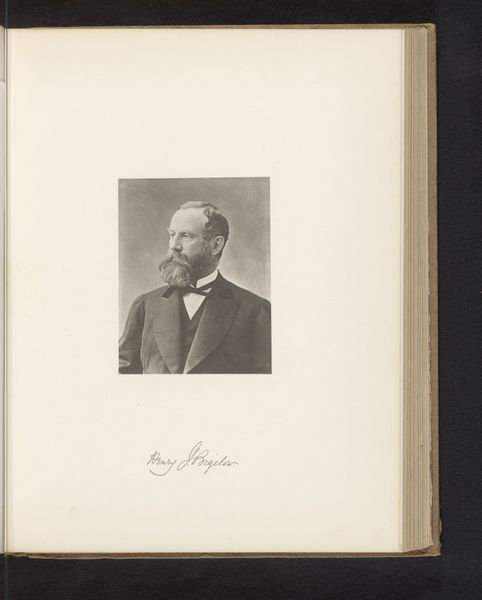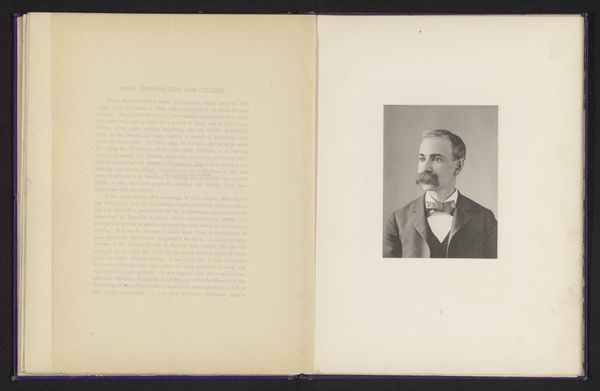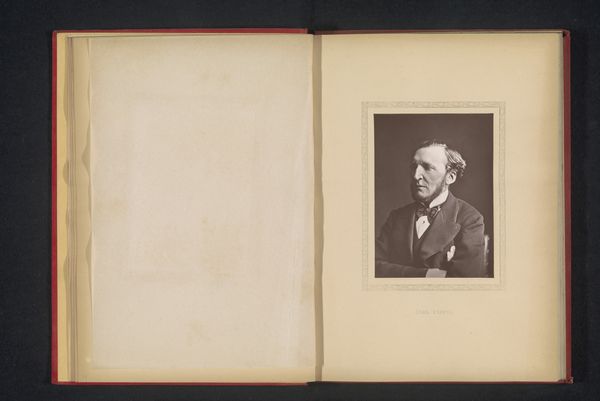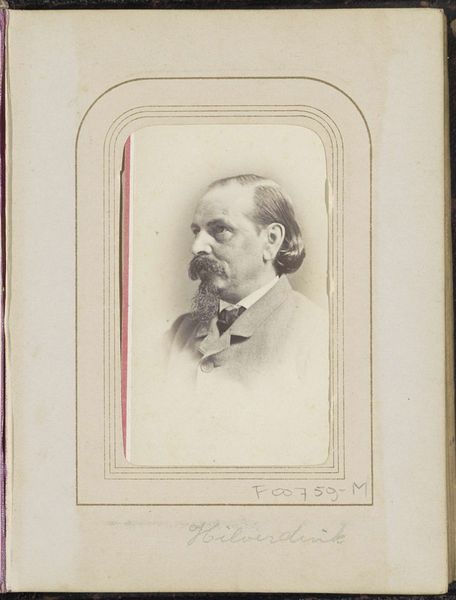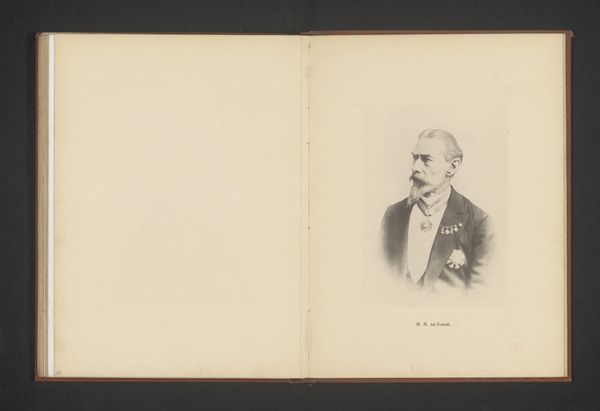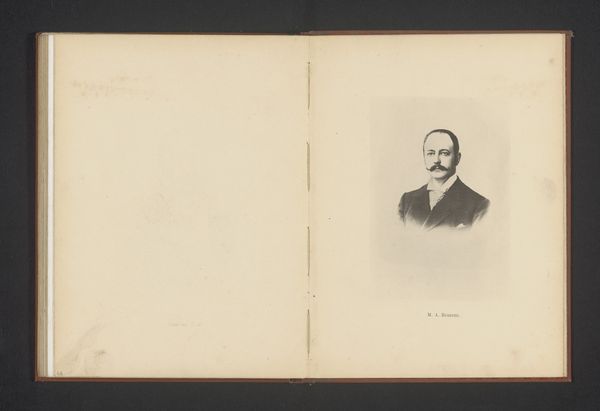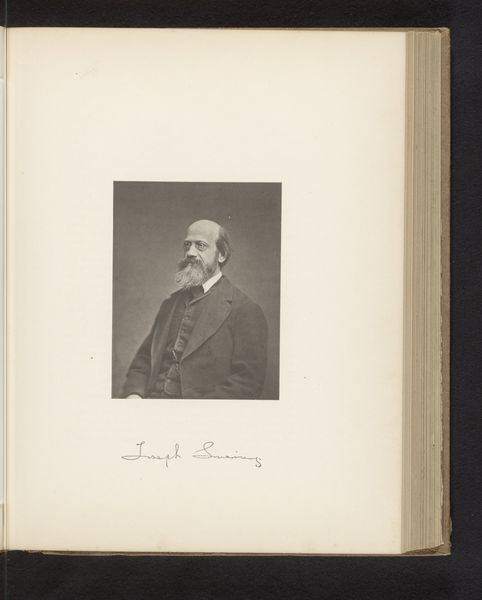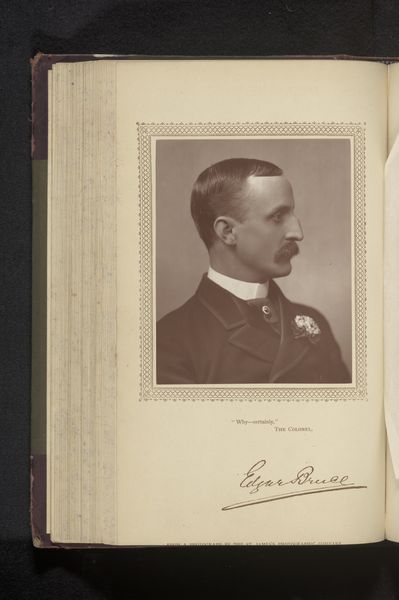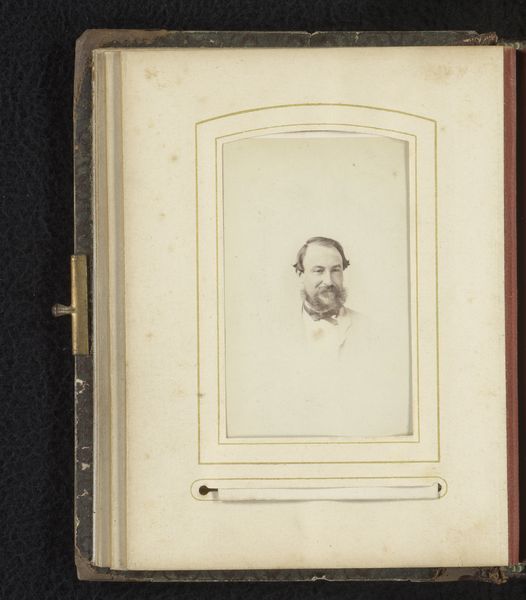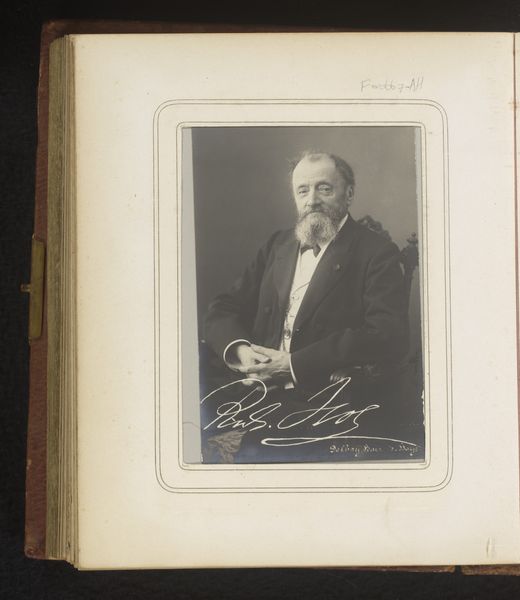
print, photography
#
portrait
#
pictorialism
# print
#
photography
#
coloured pencil
#
portrait drawing
#
realism
Copyright: Rijks Museum: Open Domain
Curator: Here we have a captivating portrait of Bram Eldering, a photographic print created sometime between 1890 and 1910. Editor: It’s striking—a somber, almost stoic mood pervades. The monochrome tones emphasize a formal composure and it really anchors it in its historical context. Curator: Indeed. Let's consider this piece within the rise of Pictorialism. The movement encouraged photography's acceptance as fine art and aimed to grant the photographer artistic license in a manner then usually associated with painting, challenging rigid standards. This photograph has that soft-focus, painterly quality typical of the time. We can almost see the hand of the artist shaping the presentation of their subject. The subject's expression too seems posed and somewhat constrained by society. Editor: I'm drawn to the way the photographer carefully chose their materials to create the piece—it really speaks to the effort involved in these early photographic prints. We also need to examine the class elements presented; note the man’s tailored suit and neat tie, clear signifiers of a certain level of economic stability. The photo print itself, as a reproducible commodity, suggests emerging consumer culture of the period. Curator: The fact that Eldering chose to be captured in this formal way does imply his engagement with bourgeois ideals. I wonder how photography during that era either empowered or perhaps even silenced marginalized voices. Was photographic portraiture then only accessible to the privileged few? How might different modes of representation change a culture’s self-perception? Editor: That tension you bring up about empowerment versus access is crucial. It reflects the dichotomy between how technological advancements like photography might promise democratization but can also reinforce existing power structures and economic disparities within the system of production itself. What does this mean when applied across race, gender, and class in late nineteenth and early twentieth centuries? Curator: A powerful observation indeed! This photograph serves as a lens through which we may begin to interrogate social identities and representation, and explore ways to encourage a critical dialogue with our present reality. Editor: Absolutely. Thinking about it, a consideration of these older technologies is crucial for analyzing how representation shapes our material present.
Comments
No comments
Be the first to comment and join the conversation on the ultimate creative platform.

